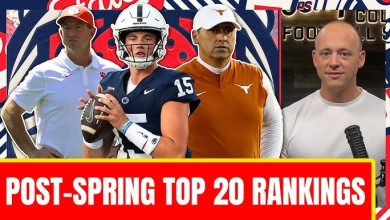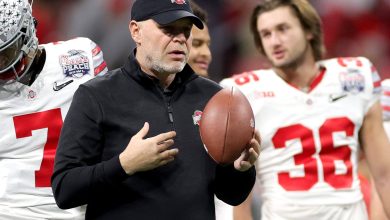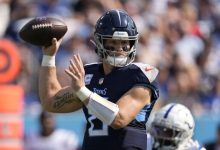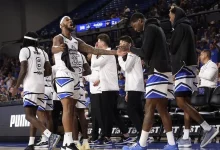Dodgers manager Dave Roberts warned the pitching injury crisis and bullpen overuse are unsustainable, urging roster changes to stabilize the staff amid key pitchers sidelined and heavy bullpen workloads.
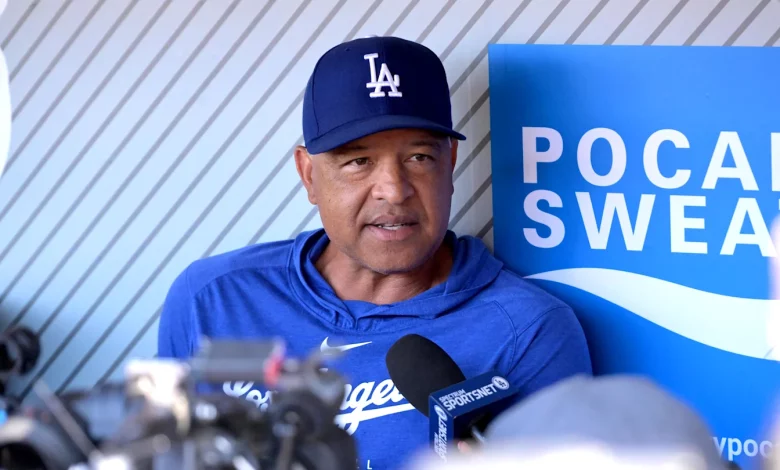
The Los Angeles Dodgers, perennial championship contenders and defending World Series champions, find themselves grappling with a growing crisis on the mound. After a tough 5-4 walk-off loss to the Miami Marlins on May 6, 2025, Dodgers manager Dave Roberts broke his silence, openly addressing what has become a major and urgent concern for the team: a mounting pitching injury crisis coupled with an overworked bullpen that Roberts described as “absolutely not sustainable.”
The Dodgers’ rotation and bullpen—once considered among the best and deepest in baseball—are now stretched thin due to injuries to key starters and relievers. As the team attempts to navigate a competitive National League West and position itself for a postseason run, Roberts’ candid remarks highlight a pivotal challenge threatening the Dodgers’ hopes this season.
The Injury Plague: Key Pitchers on the Sidelines
The Dodgers entered the 2025 season with high expectations, boasting a deep pitching staff that helped power their recent championship runs. However, an alarming number of injuries have sidelined crucial arms, creating a ripple effect across the pitching staff.
Among those injured are several frontline starters:
- Blake Snell: The veteran left-hander, expected to anchor the rotation, has been sidelined due to shoulder inflammation. Snell’s absence deprives the Dodgers of a dependable innings eater who combines strikeout ability with experience.
- Tyler Glasnow: Another top starter battling health issues, Glasnow’s powerful fastball and devastating slider have been missing from the rotation due to a lingering elbow strain. His absence has left a significant void in the Dodgers’ rotation depth.
- Clayton Kershaw: The longtime Dodgers ace and fan favorite, Kershaw is currently recovering from a setback related to a chronic back condition. While his veteran presence remains invaluable, his limited availability affects the team’s rotation stability.
In addition to starters, the Dodgers’ bullpen has suffered injuries to important relievers, including:
- Evan Phillips: A reliable middle reliever who often handles tough innings, Phillips has been sidelined with a flexor strain, further thinning the Dodgers’ bullpen options.
The cumulative effect of these injuries has forced the Dodgers to rely heavily on a shrinking pool of healthy pitchers, many of whom are logging excessive innings.
Roberts’ Candid Assessment: “Absolutely Not Sustainable”
Speaking candidly to the media following the loss to the Marlins, Dave Roberts expressed deep concern about the mounting pitching problems.
“Our bullpen has been working overtime, and honestly, this kind of workload is absolutely not sustainable over the course of a full season,” Roberts said. “We’re seeing some guys thrown into action way more than they should be, and with key starters injured, the pressure only mounts. We need to find solutions, and fast.”
Roberts highlighted the fact that four relievers have appeared in half of the Dodgers’ first 36 games, a staggering workload that raises questions about fatigue, injury risk, and long-term effectiveness.
The manager’s frankness reflected the frustration of a team struggling to maintain balance and health while competing against elite competition. His remarks also signaled that changes were necessary to preserve the pitching staff’s integrity and the Dodgers’ competitive edge.
Bullpen Overuse: A Double-Edged Sword
The Dodgers’ bullpen, often a strength and key to their success, has now become a focal point of concern due to overuse. With starters unavailable or limited in innings, the bullpen has been called upon more frequently and for longer stretches than usual.
Relievers such as:
- Yoshinobu Yamamoto: Despite an outstanding 1.06 ERA and a reputation for shutting down opponents, even Yamamoto has been pitching heavy innings, showing signs of wear.
- Other bullpen arms like Dylan Floro, Michael Grove, and Andre Jackson have seen increased roles, contributing positively but under significant physical demands.
The consequence of overusing relievers includes:
- Fatigue and Decreased Performance: Increased innings can reduce a pitcher’s velocity, control, and effectiveness.
- Higher Injury Risk: Overworked pitchers face a greater chance of strains and other injuries, potentially compounding the crisis.
- Limited Strategic Options: When key relievers tire, managers have fewer reliable options in late innings, increasing the likelihood of unfavorable matchups and runs allowed.
Roberts acknowledged these risks, emphasizing the importance of preserving arms for the stretch run and playoffs.
Roster Adjustments: The Path Forward
To address the pitching crisis and bullpen overuse, Roberts and the Dodgers’ front office are actively considering roster moves and strategic adjustments.
Possible Options Include:
- Acquiring Additional Pitching Depth: The Dodgers are reportedly exploring trades, waiver claims, or minor league call-ups to bolster both the rotation and bullpen. Adding fresh arms could alleviate pressure on overused pitchers.
- Managing Pitch Counts and Roles: The coaching staff may limit innings for certain pitchers or adjust bullpen roles to distribute workloads more evenly.
- Resting and Rehab: Ensuring injured pitchers receive proper rehabilitation without rushing them back prematurely is critical.
- Leveraging Versatility: Using pitchers capable of multiple roles—such as starter-reliever hybrids—can provide tactical flexibility.
Roberts stressed that while changes are underway, it will take time to stabilize the staff fully.
The Importance of a Healthy Pitching Staff
For a team like the Dodgers, pitching is foundational to sustained success. Historically, strong rotations and bullpens have been key contributors to their championship runs.
A healthy staff offers:
- Consistent Quality Innings: Deep outings from starters reduce bullpen strain.
- Late-Game Reliability: A fresh and effective bullpen can preserve leads and secure wins.
- Strategic Matchup Advantages: Depth allows managers to make matchup-based decisions to neutralize opponents’ strengths.
When injuries and overuse disrupt this balance, the team’s overall performance suffers, as reflected in recent close losses and diminished pitching effectiveness.
Player Perspectives and Clubhouse Morale
Reports indicate that Dodgers pitchers are aware of the heavy workloads and the toll they are taking, but remain committed to supporting each other through the adversity.
Veteran pitchers have been vocal about the need for rest and caution, while younger arms are eager to contribute but cautious about overextending.
Roberts and the coaching staff have emphasized open communication, encouraging pitchers to voice concerns and prioritize long-term health.
Maintaining positive clubhouse morale amid injury challenges is essential, and the Dodgers’ leadership is working to keep the team focused on the bigger picture.
Looking Ahead: Can the Dodgers Overcome the Crisis?
The Dodgers remain a talented, deep team with championship experience. If they can manage this pitching crisis effectively, they still have a strong chance to compete for the playoffs and another World Series title.
Success will depend on:
- Effective Roster Moves: Bringing in reinforcements without disrupting chemistry.
- Smart Usage: Managing innings and roles to maximize health and performance.
- Player Health: Prioritizing recovery for injured stars like Snell, Glasnow, and Kershaw.
- Consistent Offense and Defense: Reducing pressure on the pitching staff by providing run support and solid defense.
Roberts remains optimistic but realistic, aware that the road ahead will be challenging but navigable with the right adjustments.
Urgency and Hope Amid Pitching Challenges
Dave Roberts’ candid comments on the Dodgers’ pitching injury crisis and bullpen overuse underscore a critical challenge facing the defending champions. The team’s league-leading bullpen innings and sidelined key pitchers reveal an unsustainable situation demanding swift and thoughtful solutions.
The Dodgers’ ability to adapt, reinforce their staff, and carefully manage workloads will be crucial in determining whether they can maintain their status as championship contenders in a fiercely competitive league.
As the season unfolds, all eyes will be on Los Angeles to see how they navigate this adversity—and whether the pitching staff can regain health and stability to fuel another deep playoff run.




